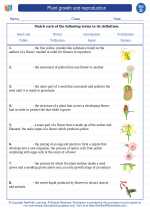Plant growth and reproduction -> response to stimuli
Response to Stimuli
Response to stimuli is a crucial concept in the field of science, particularly in the study of living organisms. It refers to the way living organisms react to various external or internal stimuli in their environment. These responses can be observed in plants, animals, and even in single-celled organisms.
Types of Responses to Stimuli
There are several types of responses to stimuli that living organisms exhibit:
- Tropism: This refers to the growth or movement of an organism in response to a stimulus such as light or gravity. For example, plants exhibit phototropism by growing towards a light source.
- Taxis: Taxis is a directed movement toward or away from a stimulus. For instance, bacteria exhibit chemotaxis by moving towards or away from chemical stimuli.
- Reflex: Reflexes are rapid, automatic responses to a stimulus that help protect the organism from harm. An example is the quick withdrawal of a hand from a hot object.
- Instinctive Behavior: This type of response is innate and does not have to be learned. It is often related to survival behaviors such as migration in birds.
- Learned Behavior: Some responses are learned through experience and are not necessarily innate. For example, a dog learning to sit on command.
Examples of Response to Stimuli
There are numerous examples of how living organisms respond to stimuli:
- Plants bending towards a light source
- Animals migrating in response to seasonal changes
- Humans shivering in response to cold temperatures
- Bacteria moving towards a food source
- Animals exhibiting fight or flight response when faced with danger
Importance of Response to Stimuli
The ability of living organisms to respond to stimuli is essential for their survival. It allows them to adapt to changes in their environment, find food, avoid predators, and reproduce. Understanding how organisms respond to stimuli also provides valuable insights for fields such as agriculture, medicine, and ecology.
Study Guide
To understand the concept of response to stimuli, it is important to:
- Learn about the different types of responses to stimuli, such as tropism, taxis, reflex, instinctive behavior, and learned behavior.
- Explore specific examples of how various organisms respond to stimuli in their environment.
- Understand the significance of these responses for the survival and adaptation of living organisms.
- Consider the practical applications of studying response to stimuli in fields such as agriculture, medicine, and ecology.
By grasping the concept of response to stimuli, one can gain a deeper understanding of the behaviors and adaptations of living organisms in their environment.
.◂Science Worksheets and Study Guides Fourth Grade. Plant growth and reproduction
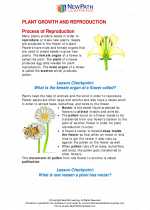
 Worksheet/Answer key
Worksheet/Answer key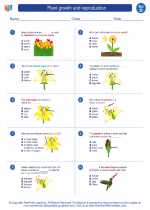
 Worksheet/Answer key
Worksheet/Answer key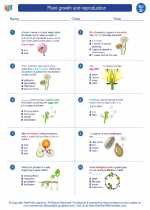
 Worksheet/Answer key
Worksheet/Answer key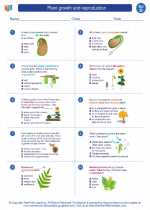
 Vocabulary/Answer key
Vocabulary/Answer key
 Vocabulary/Answer key
Vocabulary/Answer key